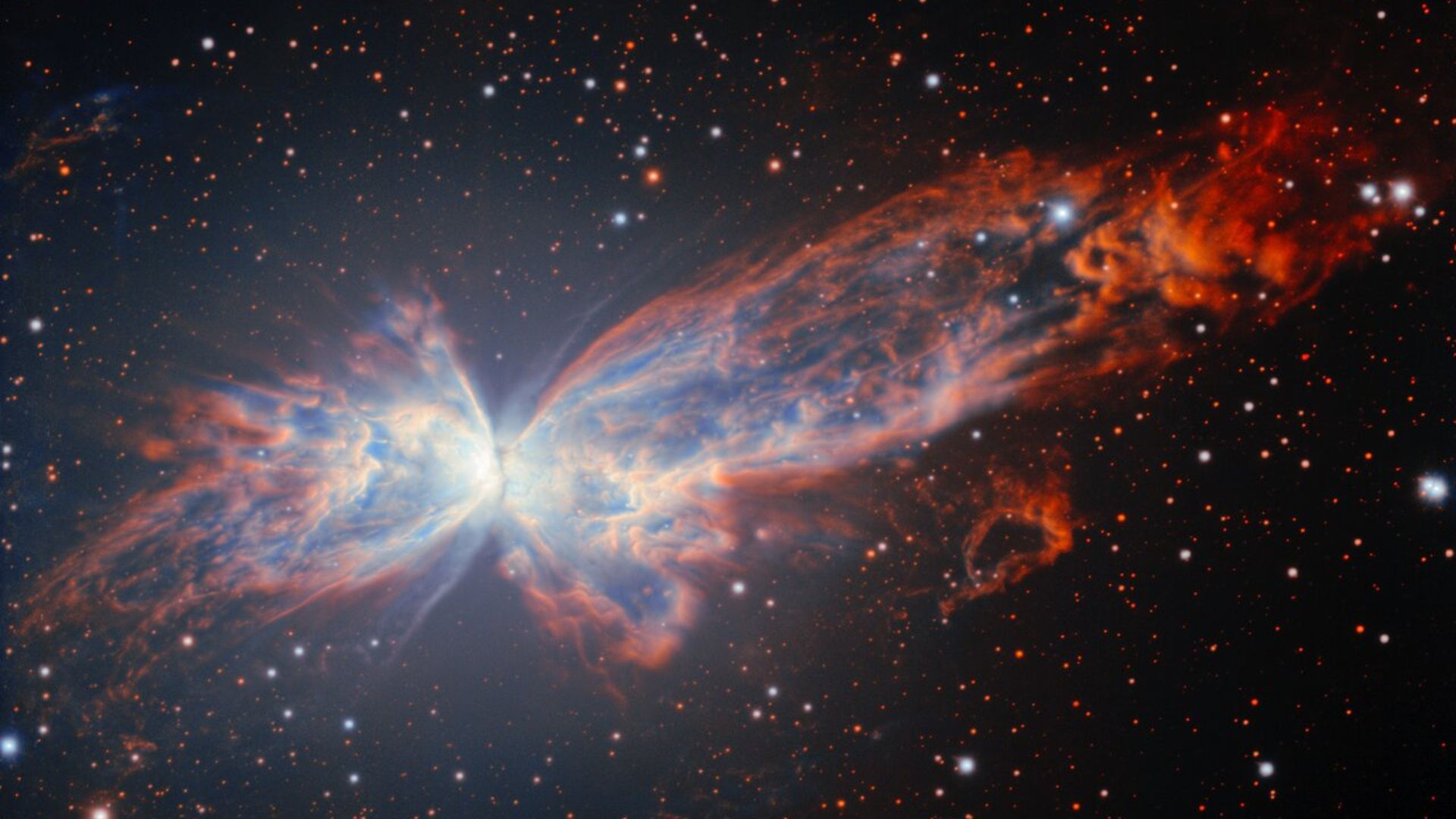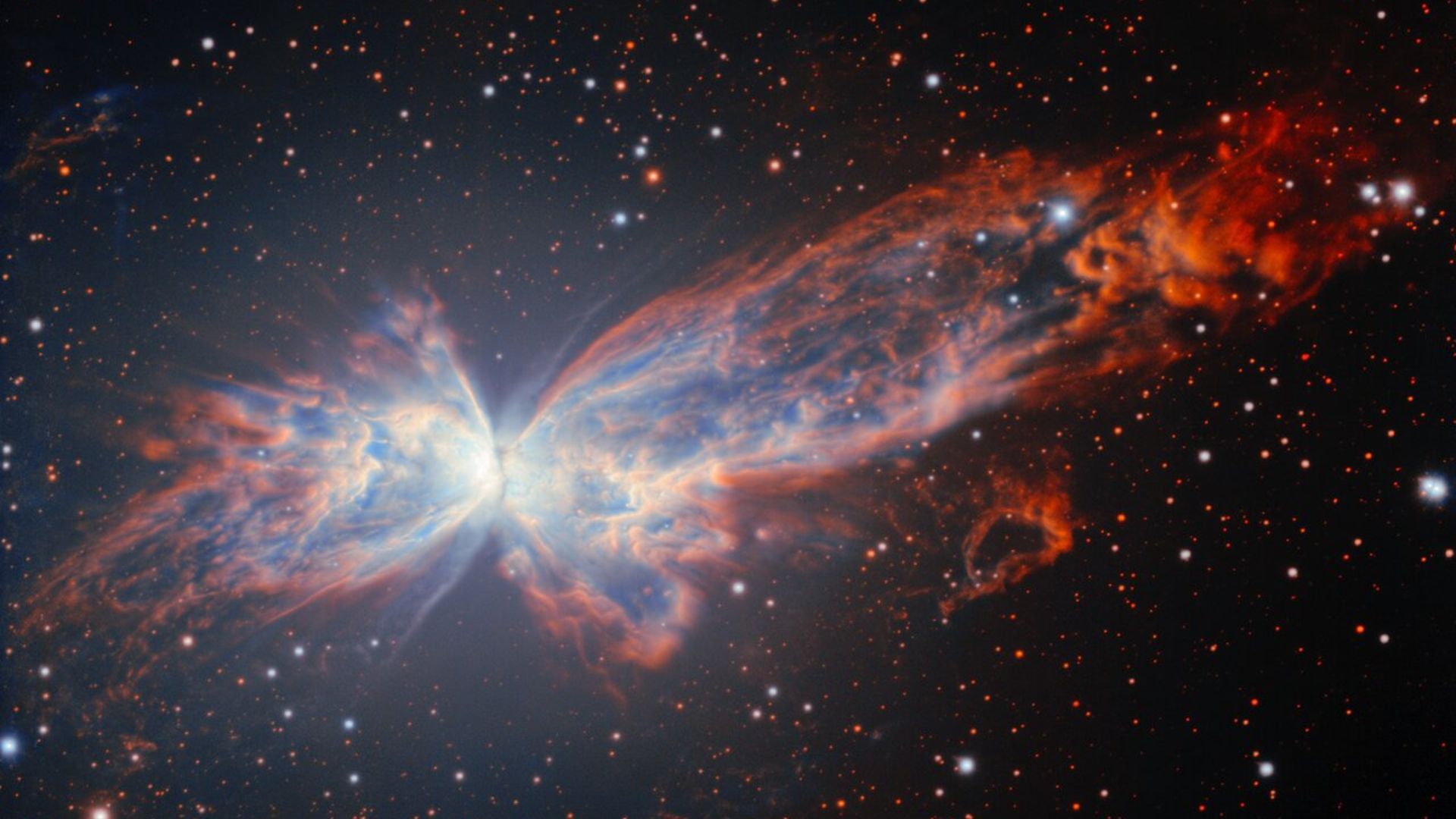Now Reading: See the Butterfly Nebula like never before in this spectacular Gemini South telescope image
-
01
See the Butterfly Nebula like never before in this spectacular Gemini South telescope image
See the Butterfly Nebula like never before in this spectacular Gemini South telescope image


The Gemini South telescope is turning 25, and astronomers are celebrating its birthday with a dazzling new image of the Butterfly Nebula.
Also cataloged as NGC 6302, this planetary nebula is located in the constellation Scorpius, the Scorpion. Its precise distance is unclear, but astronomers think it’s between 2,500 and 3,800 light-years away.
Slower-moving material was ejected from the red giant’s equatorial zone, forming the dark, dusty belt in the body of the butterfly in this image. The wings were then formed by faster-moving perpendicular outflows and sculpted further by a hot wind of radiation that signaled the star’s final gasps.
That radiation wind energized the material in the nebula, heating it to 36,000 F (20,000 C) and ionizing the gas there. The red in the image indicates ionized hydrogen, and blue shows ionized oxygen. In about 5 billion years, the sun will also turn into a white dwarf surrounded by a pretty planetary nebula.
The Butterfly Nebula was chosen as the target for the 8.1-meter (26.6 feet) Gemini South telescope’s 25th anniversary image by Chilean school students taking part in the Gemini First Light Anniversary Image Contest.
Located atop Cerro Pachón in the Chilean Andes, the Gemini South telescope is one-half of the International Gemini Observatory, which also incorporates its twin, Gemini North, on Mauna Kea in Hawaii. Both telescopes are operated by the National Science Foundation’s NOIRLab, with funding from Brazil, Canada, Chile and the United Kingdom.
The Gemini telescopes were the brainchild of astronomer Fred Gillett. The aim of the telescopes was to provide continuous coverage of the sky from both the Northern and Southern hemispheres, using identical telescopes with adaptive optics and the capability to conduct near-infrared wide-field surveys. First light on Gemini North took place in June 1999, and on Gemini South in November 2000. Gillett died only a few months later, and Gemini North is named the Frederick C. Gillett Gemini Telescope in his honor.
Stay Informed With the Latest & Most Important News
Previous Post
Next Post
-
 012024 in Review: Highlights from NASA in Silicon Valley
012024 in Review: Highlights from NASA in Silicon Valley -
 02Panasonic Leica Summilux DG 15mm f/1.7 ASPH review
02Panasonic Leica Summilux DG 15mm f/1.7 ASPH review -
 03How New NASA, India Earth Satellite NISAR Will See Earth
03How New NASA, India Earth Satellite NISAR Will See Earth -
 04And Thus Begins A New Year For Life On Earth
04And Thus Begins A New Year For Life On Earth -
 05Astronomy Activation Ambassadors: A New Era
05Astronomy Activation Ambassadors: A New Era -
06SpaceX launch surge helps set new global launch record in 2024
-
 07Space Force plans new ‘Futures Command’ amid pressure to speed up modernization
07Space Force plans new ‘Futures Command’ amid pressure to speed up modernization




















